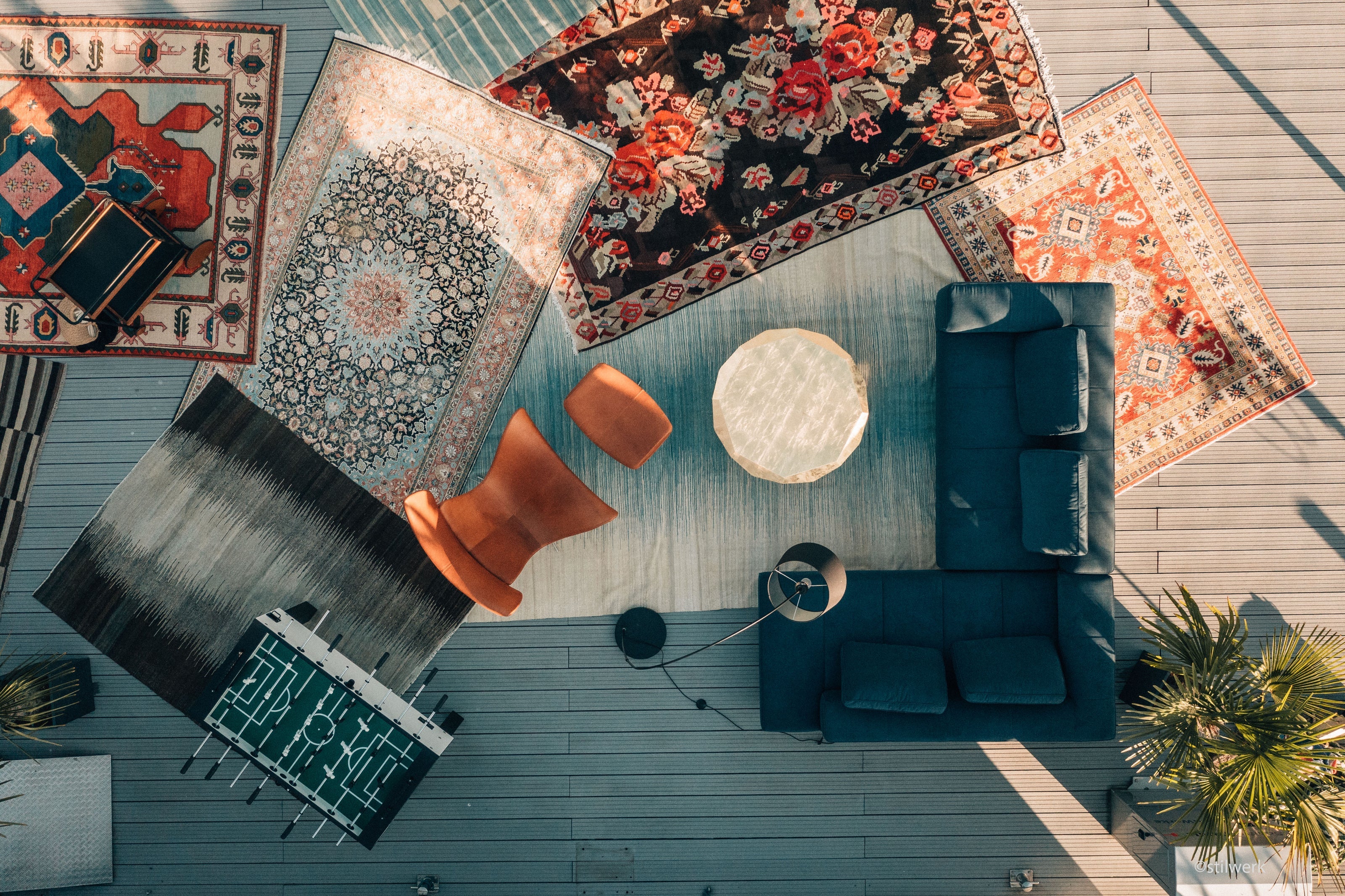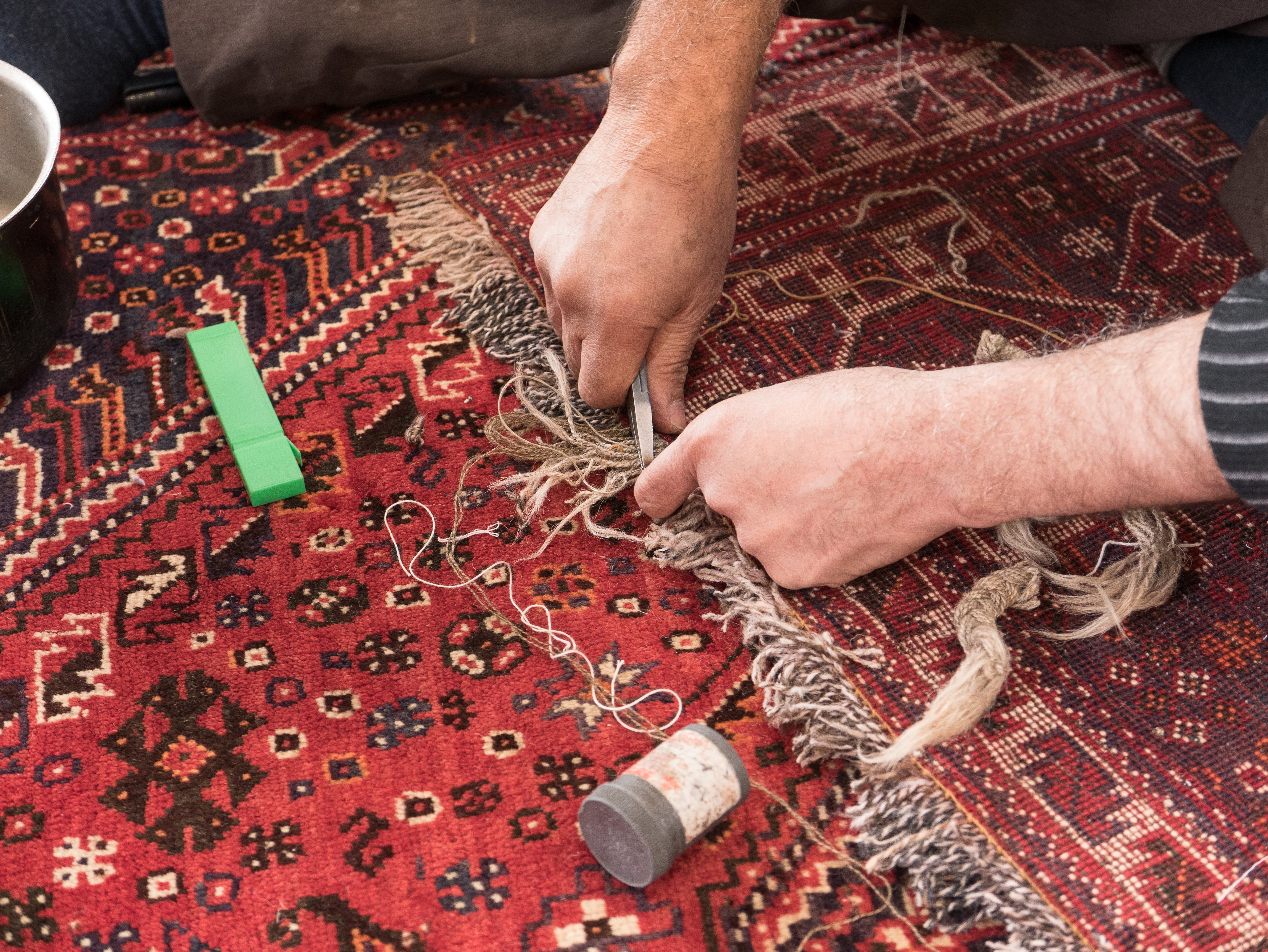






Loribaft
300 cm x 206 cm
Nr. 18307
|
|
1-3 Werktage Lieferzeit (deutschlandweit) |
|
|
14 Tage Probelegen |
|
|
Kostenlose Lieferung & Retoure innerhalb der EU |
Floral Loribaft, off white with plain border
| Place of origin | Indien |
| Size | 300 cm x 206 cm (= 6.18 qm) |
| Manufacturing | hand knotted |
| Material | Flor: wool (handspun, natural dyes) & viscoseWeft & Warp: cotton |
| Knots/m2 | 250.000 |
| Pile height | 10mm |
| Condition | new |
| Coloring | off white, beige |
| Edition | Single piece |
Place of origin
Lori rugs have colorful imaginative geometric patterns. Modern Lori today usually have plain and monochromatic designs. Loris usually come in natural shades of cream, brown and grey. But there are also loris in vivid yellow, red or blue. Still today, the traditional stylized and geometric patterns from the everyday life of the nomads, such as goats, camels, dogs, plants or people, can be found in the patterns of Lori rugs. The geometric pattern and the jovial colors make for a pleasant, warm living atmosphere. Lori rugs are a finer version of the Gabbeh, knotted by the Lurs, a tribe in southwest Persia (also Loristan). They are also known as Loribaft. The suffix "baft" stands for "knotted". Translated, Loribaft means Lurs knot.
Patterns
The luxuriant flower motifs of this Loribaft are elegant and varied. The graceful vegetative symbols representing flowers, leaves and branches are artfully intertwined.
The repeating elements in the center field of this Loribaft rug have no specific center (so-called repeating pattern). The repeating pattern has a calming but not boring effect. Rugs with repeating patterns are also called patterned.
The plain r panel is framed by a border in off white. This gives the rug depth despite its relatively simple design.
Material
The pile of this Loribaft is made of a durable mixture of handspun wool and viscose.
Viscose also acetate silk or rayon is basically obtained from the natural product, cellulose, i.e. from the raw material of wood. In India, the cellulose mass is obtained from bamboo. In an elaborate process, the pulpy cellulose is pulled into a continuous textile yarn. This is why viscose is also known as continuous filament yarn. Because of the silky sheen of the yarn, viscose obtained from bamboo is also called "Bamboo Silk". The colloquial name "artificial silk" is not permitted under the German Textile Labelling Act TKG.
The technique used to process the wool for the pile of this Loribaft is over 200 years old. The wool has been dyed with natural dyes and spun by hand. Dyeing with natural or vegetable dyes is more complicated, expensive and time-consuming than dyeing with chemical dyes. For a bright red, for example, you need about one kilogram of ground madder root as dye per kilogram of wool. For a strong, not too pale yellow, you need even two kilograms of the dye per kilogram of wool. Spinning the wool is also time-consuming and labour-intensive. In addition, fewer and fewer people are able to spin wool by hand.
But the effort is worth it; by dyeing with natural dyes, the high-quality wool retains its natural fat content. Wool dyed with natural dyes and spun by hand creates fascinating, iridescent patterns. The charm of hand-spun wool with its slight irregularities and natural shades unfolds in rooms that are furnished in a more traditional or country house style but also as a contrasting element in modern interiors.
The weft and warp threads of this Loribaft are made of cotton. This versatile material is tear-resistant and stretchable and, therefore, ideal for a durable backing fabric.
Hinweis zu den Fotos
Kinderarbeit? Nein Danke.
Choose options







300 cm x 206 cm
Nr. 18307
|
|
1-3 Werktage Lieferzeit (deutschlandweit) |
|
|
14 Tage Probelegen |
|
|
Kostenlose Lieferung & Retoure innerhalb der EU |


